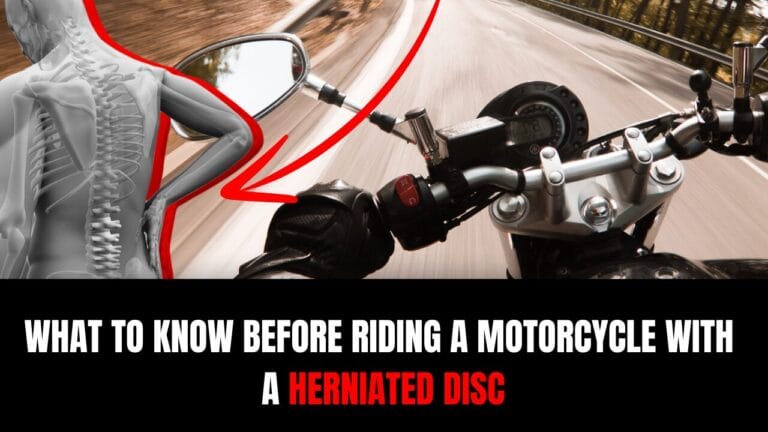How To Make Helmet Cheek Pads Thinner? 2 Easy Techniques!
Most of the time, the cheek pads are not the problem. They are supposed to have a snug fit. But if it is causing continuous discomfort, then you can think about thinning them.
But how do you make the helmet cheek pads thinner? The techniques range from simple DIY approaches to tricky alterations. You can take off the removable foam layer or buy replacement cheek pads.
In this “how-to” guide, we will discuss two efficient methods to make your helmet cheek pads thinner. So, read on to learn the methods.
How To Make Helmet Cheek Pads Thinner?
Sometimes, your new helmet’s cheek pads can be a little thicker, which can be too tight and compromise comfort. In this case, you can make the pads thinner.
We have discussed two effective methods you can follow to make your helmet’s cheek pads thinner.
1. Take Off The Removable Foam Layer
Some manufacturers use a removable foam layer in helmet cheek pads. Follow the simple DIY steps below to take off a removable foam layer:
- Arrange a tweezer and a scissor.
- Detach the cheek pads from your helmet.
- Remove the covers on the cheek pad foam with a scissor.
- Check for a removable foam layer, as some manufacturers, such as Arai, Shoei, make cheek pads with a removable foam layer.
- If you find a removable foam layer, pull it off with your fingers or a tweezer to get a reduced cheek pad thickness.
- Reassemble the helmet.
- Wear it to check if the helmet fits perfectly.
Watch the following video on how to put off the cheek pad’s removable foam layer.
Precautions
- Use the right tools and work carefully to avoid any breakage or deterioration while removing or reassembling the parts.
2. Buy Replacement Cheek Pads
If your helmet cheek pads don’t have any removable foam layers, check for any replacement opportunities. If your helmet offers a replacement option, buy replacement cheek pads. Follow the easiest DIY steps below to make a replacement:
- Buy quality cheek pads that are compatible with your helmet model. Choose the right cheek pad size according to your cheek health and shape.
- Remove the existing cheek pads from your helmet.
- Reassemble your helmet with the new cheek pads.
- Wear the helmet and have a trial ride to check if the cheek pads work as you need them.
Watch the following video on how to remove cheek pads from a helmet.
Precautions
- Work carefully to avoid any breakage or deterioration while detaching or attaching the parts.
- Keep the new cheek pads free from any damage so you can replace them if their size is not correct.
How Tight Should Your Helmet Cheek Pads Be?
Your helmet serves as a crucial safeguard component, offering protection during rides or sports activities. So, the cheek pads should be as tight as they perfectly fit your head.
Your helmet should have a snug fit but shouldn’t overly squeeze your cheeks. The fit should be comfortable without causing excessive pressure.
It should cover your forehead, secure your chin strap, and stay in place without being excessively tight on your cheeks.
Watch the following video to learn how tight the helmet’s cheek pads should be.
What Size Cheek Pads Do You Need?
Helmet cheek pads come in a wide range of thicknesses from 10mm to over 50mm. You have to determine which one is correct for your cheek health and shape.
You can choose cheek pad thicknesses that are different from your helmet. Look for cheek pads that are interchangeable between different helmet sizes. So you don’t need to be worried about using a particular-sized cheek pad.
How Can You Tell If Your Helmet Is Too Tight?
You can feel and understand it easily. Here are the symptoms and scenarios you will see if you wear a too-tight helmet:
- If your helmet is too tight, you will feel extra pressure on the sides of your head. Extra pressure will lead to discomfort and pain.
- The pain or discomfort may eventually lead to headaches if you wear the tight helmet for too long.
- You will notice redness or red marks left on your forehead skin.
- You will feel numbness in your head muscles after prolonged use of a tight helmet.
Should You Wear A Helmet Without Cheek Pads?
No, you should not wear a helmet without cheek pads.
- Cheek pads play a crucial role in securing the helmet properly on your head and minimizing helmet movement.
- Cheek pads help distribute energy and reduce the risk of injury.
Removing cheek pads might affect the helmet’s stability and fit. Wearing a helmet without cheek pads will compromise its effectiveness in providing proper protection.
So, it’s strongly recommended to wear a helmet with all its components for the best protection.
Frequently Asked Questions
Read the following answers to some of the most frequently asked questions regarding helmet cheek pads:
Is It OK If The Helmet Is A Little Loose?
No, it is not okay to wear a loose helmet. You wear a helmet to protect your head in case of an accident. If a helmet doesn’t fit your head snugly, it will jiggle or come off during an accident. So, never use a loose helmet.
Does Tight Helmet Cause Hair Fall?
Yes, wearing a helmet and repeatedly putting it on and taking it off can cause your hair to fall. Wearing a helmet for long periods regularly can induce traction alopecia. Also, a helmet will restrict the airflow into your hair. So, the scalp and hair health are hampered.
How Do I Know My Perfect Helmet Cheek Pads Size?
You can know it by noticing a few things. If the cheek pads compress your cheeks slightly, it is fine. Hold and move the helmet in every direction. If it holds its position firmly and does not tilt backward, forward, or sideward, it is a good fit. Overall, you will notice the helmet feels comfortable even after a long use.
Conclusion
I’ve shared various techniques so you can effectively reduce the thickness of your helmet cheek pads in the way you prefer. Choose a technique that is the easiest and most efficient for you. And don’t forget to follow the precautions.
If you are not confident enough to do the job perfectly or do not have the required tools, leave the job to a professional helmet repair expert.







